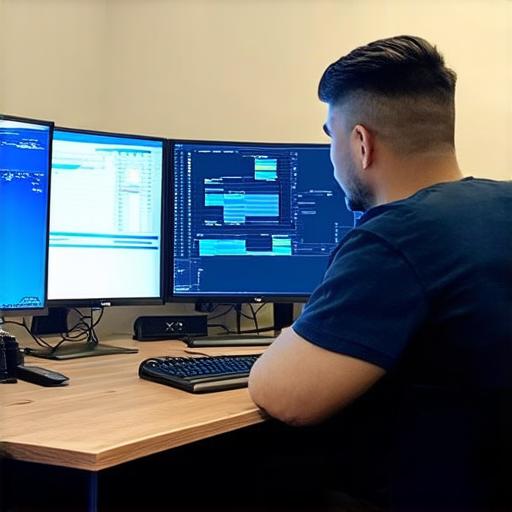Application software refers to programs designed to run on a computer or mobile device and perform specific tasks. In today’s digital age, there are countless types of application software available that cater to various needs and preferences.
1. Productivity Software
Productivity software is designed to help individuals manage their daily tasks and projects efficiently. These programs are ideal for both personal and professional use and are available in various forms, including office suites, time management tools, and project management software.
Office suites like Microsoft Office, Google Docs, and LibreOffice provide word processing, spreadsheet, and presentation tools that allow users to create and edit documents. Time management tools like Trello, Asana, and Todoist help users stay organized and on track by managing tasks and projects.
Project management software like Jira, Monday.com, and Asana can also be used to plan, organize, and manage projects effectively.
2. Gaming Software
Gaming software is designed for individuals who enjoy playing video games. These programs are available in various forms, including gaming consoles, game engines, and gaming platforms.

Gaming consoles like PlayStation, Xbox, and Nintendo Switch offer a wide range of games for players. Game engines like Unity, Unreal Engine, and Godot allow developers to create their own games. Gaming platforms like Steam, Origin, and Epic Games Launcher allow users to download and play games from various platforms.
3. Educational Software
Educational software is designed to help individuals learn new skills or improve their knowledge in specific subjects. These programs are available in various forms, including learning management systems, educational games, and video platforms.
Learning management systems like Blackboard, Canvas, and Moodle provide a platform for online learning, while educational games like Khan Academy, Duolingo, and ABCmouse teach kids various subjects in an interactive way. Educational video platforms like Coursera, Udemy, and edX offer courses from top universities that users can take online.
4. Social Media Software
Social media software is designed to help individuals connect with others and share information or content. These programs are available in various forms, including social networking sites and social media apps.
Platforms like Facebook, Twitter, and Instagram allow users to connect with friends, share photos and videos, and join groups. LinkedIn is a professional networking site that allows users to connect with other professionals, search for jobs, and join groups related to their industry.
5. Multimedia Software
Multimedia software is designed to help individuals create and edit various types of media content like images, videos, and audio files. These programs are available in various forms, including photo editing software, video editing software, and audio editing software.
Photo editing software like Adobe Photoshop, GIMP, and Affinity Photo allow users to manipulate and enhance images, while video editing software like Final Cut Pro, Premiere Pro, and iMovie allow users to create and edit videos. Audio editing software like Audacity, GarageBand, and Adobe Audition allow users to edit and manipulate audio files.
6. Mobile Apps
Mobile apps are designed to be used on smartphones or tablets and offer various functionalities like navigation, messaging, social media, productivity, and more. These programs are available in various forms, including navigation apps, messaging apps, social media apps, and productivity apps.
Navigation apps like Google Maps, Waze, and MapQuest provide turn-by-turn directions and real-time traffic updates, while messaging apps like WhatsApp, Telegram, and Signal allow users to send messages, photos, and videos to each other. Social media apps like Facebook, Instagram, and Twitter allow users to connect with friends, share photos and videos, and join groups, while productivity apps like Evernote, ToDoist, and Trello help users stay organized and on track.
7. Web Development Software
Web development software is designed for individuals who want to create and manage websites or web applications. These programs are available in various forms, including text editors, web browsers, and content management systems.
Text editors like Sublime Text, Atom, and Visual Studio Code allow developers to write code and edit HTML and CSS files. Web browsers like Google Chrome, Mozilla Firefox, and Safari allow users to view and test websites. Content management systems like WordPress, Joomla, and Drupal make it easy for non-technical users to create and manage websites.
8. Email Software
Email software is designed to help individuals send and receive emails efficiently. These programs are available in various forms, including email clients and webmail.
Email clients like Gmail, Outlook, and Apple Mail allow users to send and receive emails from their computers, while webmail allows users to access their emails from any device with an internet connection.
9. File Sharing Software
File sharing software is designed to help individuals share files with others efficiently. These programs are available in various forms, including cloud storage services and peer-to-peer file sharing programs.
Cloud storage services like Dropbox, Google Drive, and OneDrive allow users to store and share files with others from anywhere with an internet connection, while peer-to-peer file sharing programs like BitTorrent allow users to share files directly with each other.
In conclusion, there is a wide range of application software available for various purposes. Choosing the right software depends on your specific needs and requirements. By understanding the features and benefits of different types of software, you can make an informed decision and choose the best one for your needs.
